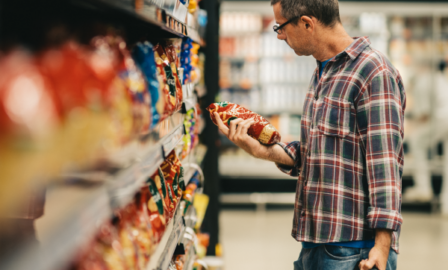Why CPG Brands Should Reconsider Child-Targeted Food Packaging
Every year, more than $12 billion is spent on marketing efforts toward children, with ad spending on social media and video game platforms rapidly growing. One factor that has proven to influence a child’s choice between two similar products is the placement of cartoon characters on food packaging – and cartoon-based advertising made up almost 50% of food companies’ marketing efforts in 2009. However, parents and guardians have demonstrated increased concerns about marketing methods used by companies in the food and beverage industry to encourage children to purchase their unhealthy products. The American Psychological Association, along with other organizations, has taken a stand against food product marketing directly to children. The British government has also faced pressure from the public to ban cartoon character- branded products that possess high quantities of sugar, salt, or fat.
Studies have shown that Americans are not making healthy purchases as often as they would ideally like to. Multicolored, gimmicky “kid food” is often correlated with high fat and sugar content, and approximately 95% of food and beverage purchase decisions made by parents are based on the preferences of their children. Modifying child-targeted food packaging can help alleviate health concerns in purchase decisions by emphasizing the nutritional aspects of a food or beverage product to parents. Therefore, companies that take steps to address health concerns may see increased public trust and build customer lifetime value, especially since the World Health Organization has deemed childhood obesity as one of the most serious public health issues of the century. CPG companies, such as Unilever and Lidl, can use their position to mentor customers by reducing misleading nutrition information and providing trustworthy, actionable guidance.
Brands Taking a Stand with Food Packaging
Unilever is one company that has recently announced efforts to mitigate parents’ concerns with child-directed marketing. Since many of their products feature licensed cartoon characters, this will create a major change throughout their product line. By the end of 2020, they have planned to stop marketing products to children under 12 in traditional media and under 13 on social media. They have implemented this effort with their Wall’s ice cream brand products, which is currently sold in international markets, and this will also eventually roll out for U.S. brands such as Breyers, Good Humor, Klondike, and Ben & Jerry’s. Wall’s products will now feature a maximum of 110 calories and 12 grams of sugar per serving, as indicated by a logo stating, “responsibly made for kids”.
Lidl will also be implementing cartoon-free private label cereal food packaging in Great Britain within the next few months. General Mills and Mars are two other companies that have established policies surrounding advertising to children in past years. The Mars Marketing Code was created to reduce company advertising toward children for certain products. General Mills’ Responsible Marketing Council also has committed to promoting healthy lifestyle choices to children younger than 12. These companies have led the way for this industry shift, but there are still challenges and outliers to recognize, though there are also many reasons for CPG brands to consider making a change in the near future.
Future Considerations for Food Packaging
30% of Americans are choosing to buy healthy foods more often than they did a year ago. Hershey, Kellogg, and Mondelez noted this trend in healthier consumption, and have consequently started to build their snacking portfolios with health bar brands. While health is a growing focus for consumers, Dunkaroos managed to make a comeback based on thousands of requests, even though General Mills had pulled the product when deciding to shift focus on producing healthier snacks. In contrast, Jif recently had to pull their Power Ups product after it did not sell as well as expected, even though it was positioned as a healthy snack for kids and parents. Chips Ahoy is also bringing back their cartoon cookie mascot to help market new flavors coming from partnerships with Hershey and Reese’s, showing that not all companies are concerned with the impact of cartoon branding on children’s food packaging choices.
Though some examples are contradictory to the overall trends pushing for health-conscious foods, there is still significant room for CPG companies to enter the health foods space, especially if they focus on producing healthier products for children. Policymakers may change licensing laws to reduce the ability for companies to market to children, and schools are now required to reduce marketing of unhealthy food packaging and beverage options. Food companies can position responsibly and gain customer loyalty by supplying nutritious options and educating consumers about healthy eating habits, since today’s youth will become the buyers of the future.
Subscribe to Clarkston's Insights
Contributions by Courtney Loughran.



